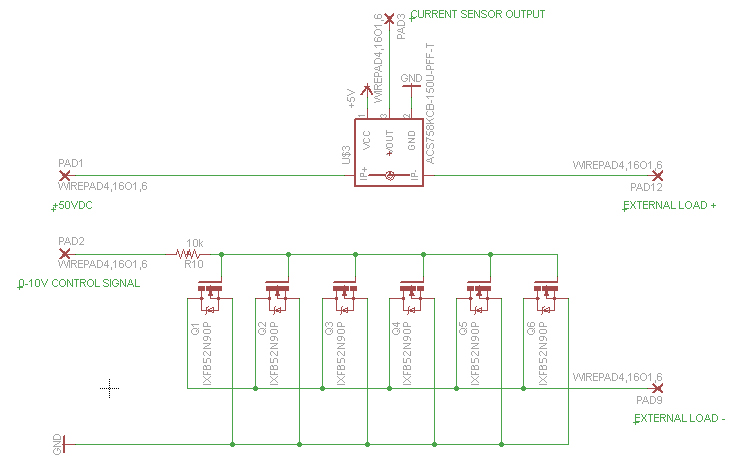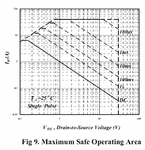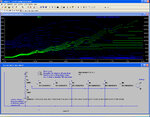rbenditt
Newbie level 4
Hello everyone. I've got a current limiter circuit that I'm working on here that "almost works". I've attached a schematic below.

The circuit sends 50 VDC to an external load whose resistance varies. The incoming current first goes through a current sensor whose output signal goes to a microcontroller (not shown). The microcontroller evaluates the current measurement and adjusts an analog output to between 0 and 10 volts. This control voltage is connected to the bases of six MOSFET transistors to throttle the current that goes through them.
What is happening in my test circuit is that the current is indeed being limited. When I make the microcontroller send different control voltages, the output current changes accordingly. The problem is that I keep frying the MOSFETs. I'm putting 30 amps through the external load and the MOSFETS should be good for 52A / 1250W each. Since I've got six of them in parallel, I don't get why I'm frying them. I'm not an electrical engineer so I may be approaching this in a completely wrong way. Any suggestions?
Thanks,
Ron
The circuit sends 50 VDC to an external load whose resistance varies. The incoming current first goes through a current sensor whose output signal goes to a microcontroller (not shown). The microcontroller evaluates the current measurement and adjusts an analog output to between 0 and 10 volts. This control voltage is connected to the bases of six MOSFET transistors to throttle the current that goes through them.
What is happening in my test circuit is that the current is indeed being limited. When I make the microcontroller send different control voltages, the output current changes accordingly. The problem is that I keep frying the MOSFETs. I'm putting 30 amps through the external load and the MOSFETS should be good for 52A / 1250W each. Since I've got six of them in parallel, I don't get why I'm frying them. I'm not an electrical engineer so I may be approaching this in a completely wrong way. Any suggestions?
Thanks,
Ron



